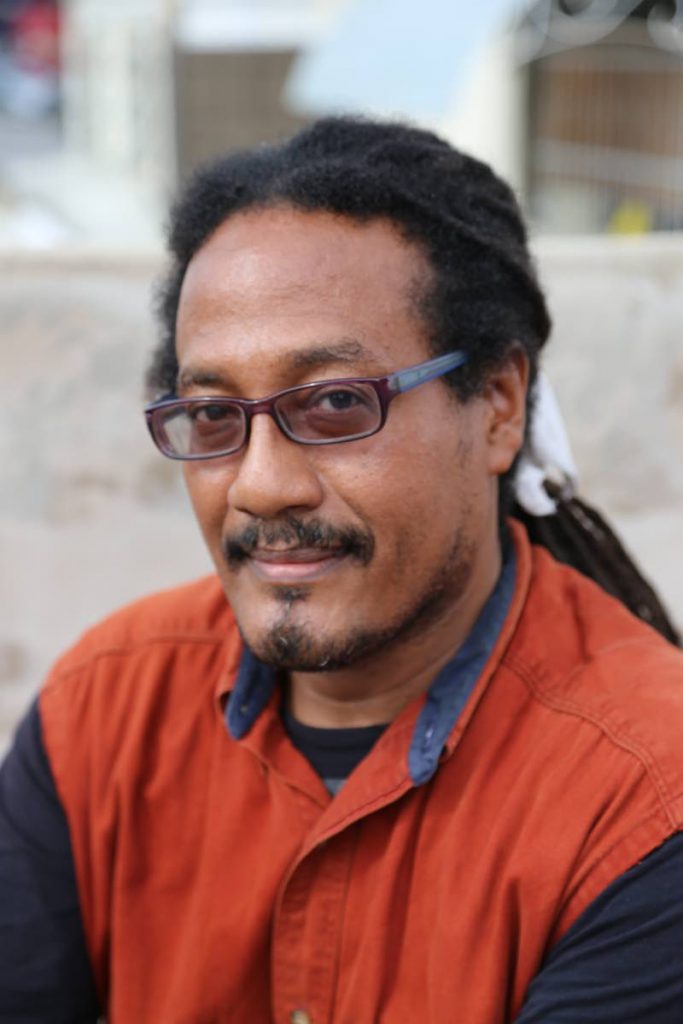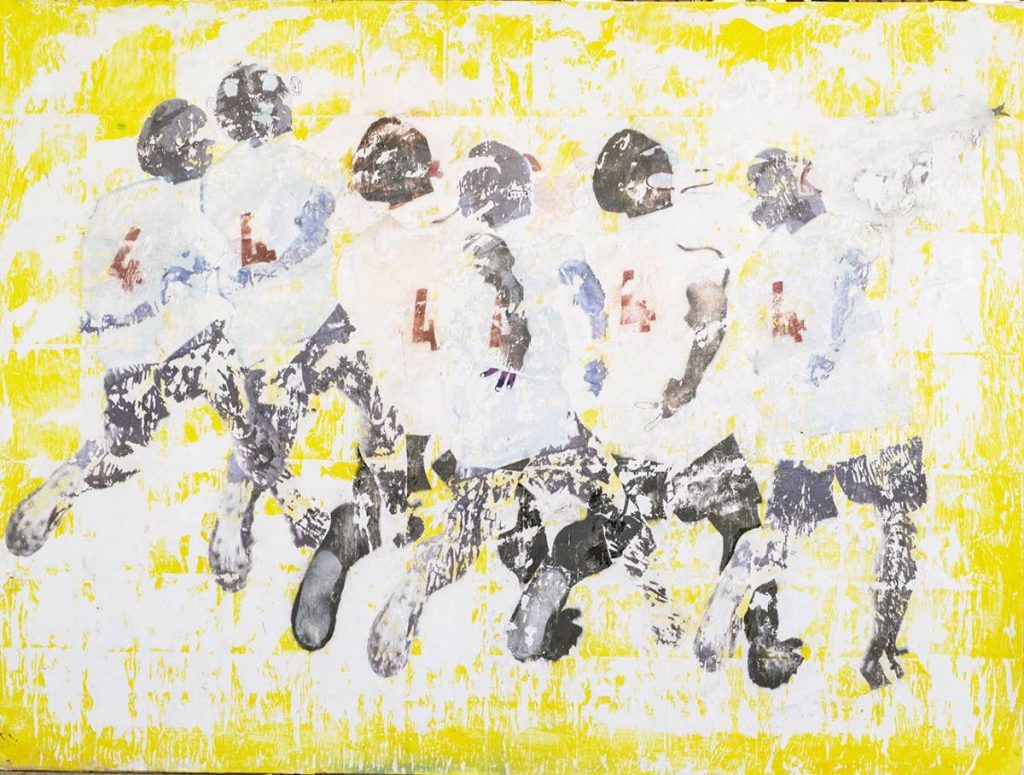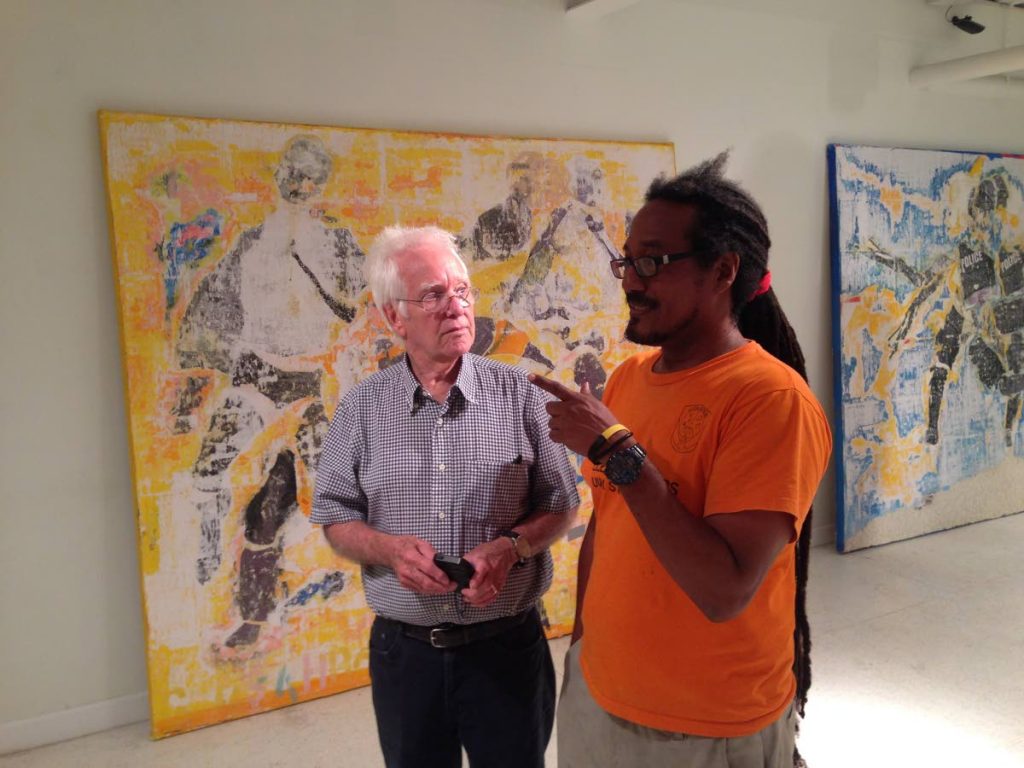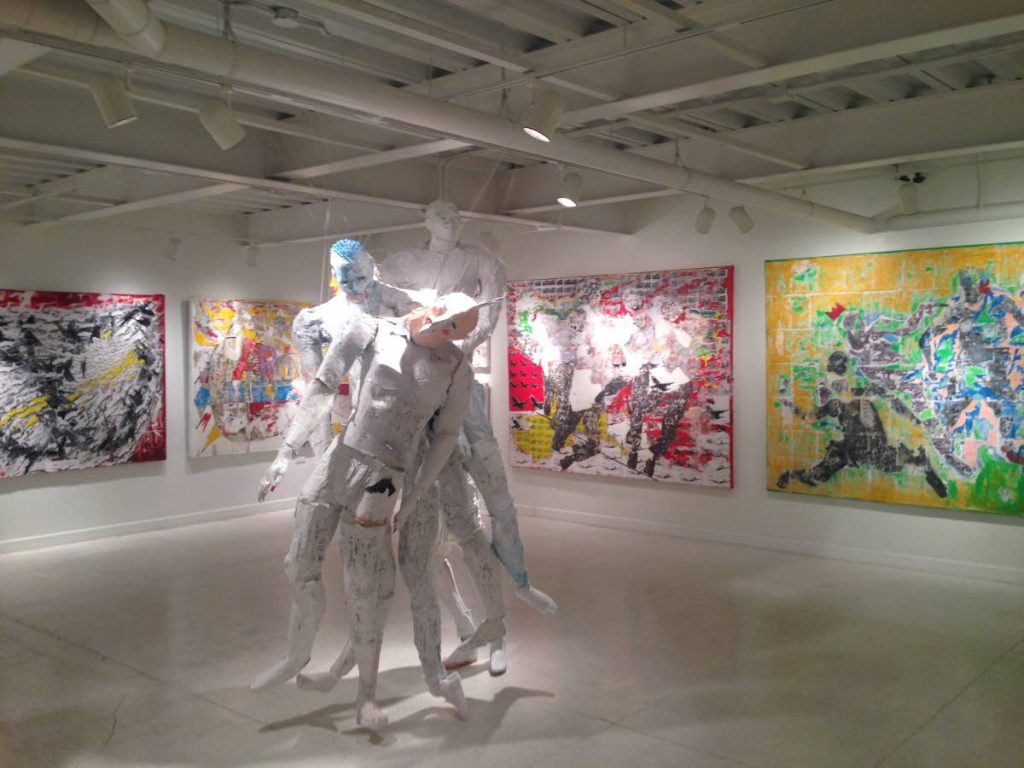Toxic form project

Sculpture on canvas is the most accurate way to describe the most recent, unconventional paintings of artist Dean Arlen. There are recurring themes of male figures and aeroplanes, and the whole collection conjures thoughts of “urban” and “gritty.”
His exhibition, The Toxic Form Project, opened at the Medulla Art Gallery in Woodbrook on Thursday evening to a slightly confused but appreciative crowd.
The pieces on canvas had so much texture that viewers were tempted to touch. Many pieces gave the impression of flyers or posters being torn down and pasted over on light poles or walls to reveal multiple layers.
Some people had to step back to appreciate the whole picture, but equally important was stepping close to take in the small details – a price sticker, a word under white paint, an embroidered daisy, or a plane ticket stub.
“To me the body of work is a kind of urban movement or a performance on the street and placing that within the canvas. It’s a conversation around urban angst... It points to what may be the problem and what could be the solution. We are a multi-layered people who need to address our past layers to come to terms with our present layers.”

Arlen said he always liked taking pictures of people wherever he travelled. He said the idea of movement fascinated him, which led to stop motion or high-speed photography. That inspired him to produce a body of work around movement within an urban space, a natural progression from the last body of work, the Paint Instillation Project, in 2013.
He told Sunday Newsday he had always been influenced by the energy and beauty of the aesthetic of urban areas, even the less savoury aspects, so he took the idea of layers, grit, and disjointedness, and created a collage by merging it with his photography and a variety of materials.
He explained that this multimedia collaging was a new process for him. He took pictures, enlarged them, printed them, cut them up, and reassembled them on the canvas. Each movement was set down in a different layer and, after several layers, he would use a sander to grind the surface down and a dance, a “neo-movement,” emerged. He would then add extra dimensions with pens, markers, and spray paint including penises, breasts, and lips.
He described it as a construction process, finding the form and digging it out of a two-dimensional frame. However, he also created four literal, human-shaped sculptures made from instillation foam, papier-mâché, and enamel paint.
NEO-MOVEMENT
Arlen said, to him, neo-movement was equated to hyper movement. “We are moving because of situations that make us move. In TT our movement is in a hyper state that we need to address. We are caught up in the idea of how you should be moving. All those things are psychological, symptomatic to your environment, to what you have been told by your parents or your religion. That could be about ambition, development, and other things but it’s definitely born out of social, political and economic angst that is definitely unhealthy.”

However, he said neo-movement could also be positive. For example, he said TT was now understanding that its movements were unhealthy. This led to a breaking point that led to awareness or changes such as the #MeToo movement, making child marriage illegal, taking steps to recognise LGBT rights, and men having to get permission from a woman to wine on her.
He said his interpretation of neo-movement was the struggle to find a rhythm to hopefully, eventually move with grace, adding that TT was in the midst of a re-birth, in a place of development, to reach a contented space. “However, that part is problematic. If we reach civilisation because people force us, we will always be primal. We will always be against understanding the other.”
TOXICITY AND LAYERS
The practical reason for the name of the exhibition was that the process was toxic. Arlen had to wear a mask for a lot of the work because of the spray paint, car paint, and dust from grinding down the pieces.
Then, he said, there was the idea of toxic masculinity.

PHOTOS COURTESY MEDULLA ART GALLERY
He explained that the four sculptures was that of a tradition in Tacarigua, where men play football in women’s clothes on Old Year’s or New Year’s day. “This was about masking and the idea of hiding oneself. I heard a story about a gangster who was hesitant to hug their child because of how he might be perceived. I think the new man, from this generation forward, will have to learn how to be in touch with their emotions and embrace their feminine side.”
He said it was often problematic for men to show love, even fatherly or platonic love, or be themselves because of society’s toxic expectations of what a man should be and do. He said two women walking the street holding hands was not a problem, but, in this part of the world, if two men held hands they would be considered gay and possibly be berated for it. He said even playing a sport could become toxic with competitiveness and rivalry becoming hostile, venomous, and violent.
Then too, there were many layers to a man including father, lover, brother, and employee. Each layer in his piece, Running Man, spoke to a particular state. He said the painting had a background and a top layer but one could not decipher which was which by looking at it. “Everything sits side by side. It is obliterating the idea of roles, being regulated to specific roles... When we grind down our layers we find our position. Would it be the new man or the toxic man? We all emerge from the process.”


Comments
"Toxic form project"